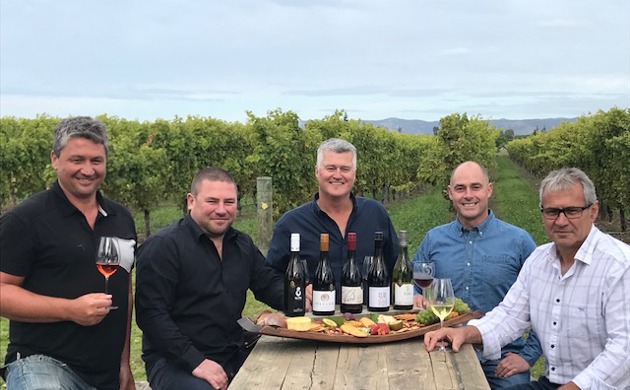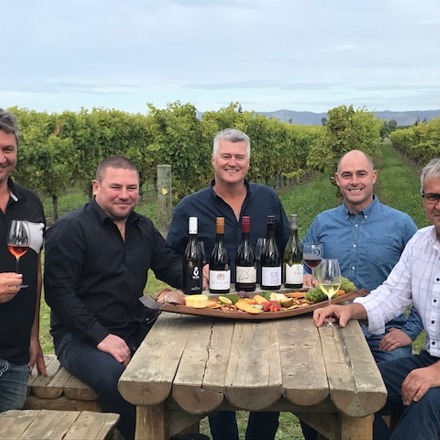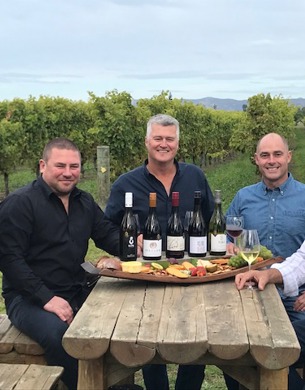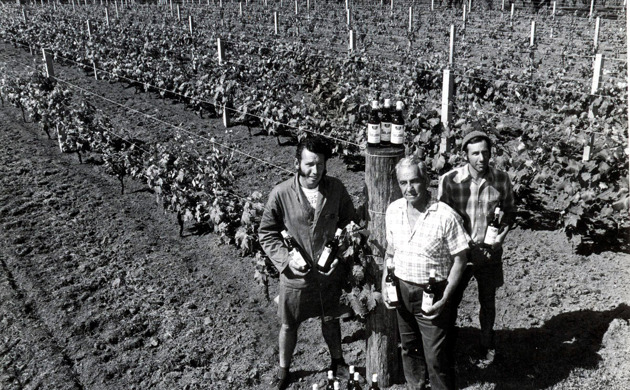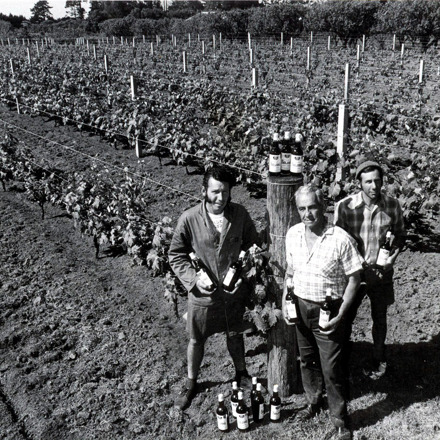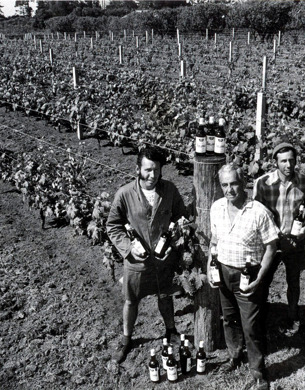Tessa Nicholson
Kirsten wasn’t even phased by the fact that the once backbone of Gisborne’s wine history, was run-down, resembled “a jungle” and only had a handful of vines left. Or the fact that she had a three-year-old, a one-year-old and one on the way, and they would have to live in the house that desperately needed renovation. It was the vision that the couple could start from scratch and reignite the name, that drew her to the block of 15 hectares.
“We knew the history, knew it had brand awareness, but we still had to start again. There were no sales, nothing really.” Former owner and founder of Matawhero, Denis Irwin, had turned much of the original vineyard into cropping land when the couple purchased it.
“There weren’t many vines out there, a lot had been pulled out over time. Everything else was bare land, which was probably quite good for us because it meant we could plant straight away. And that’s what we did, we got straight in and planted it up. We needed to, as we needed to get fruit off as soon as possible to make some money.”

Australian-born Kirsten met her husband (Gisborne born Richard) while working in London. When the couple returned to New Zealand in 2000, she decided she wanted a job that was “fun and social”.
“I had been working for Deutsche Bank in London, which was pretty boring, so I wanted something more fun.”
She applied for and got a job at Villa Maria in sales and marketing. The wine industry was an instant drawcard she says. “The industry was buzzing; everyone was talking about it.”
The fact that Richard’s parents owned a vineyard in Gisborne seemed to be serendipity. After a couple of vintages, one with Villa Maria, the other with Montana, Kirsten and Richard moved back to Gisborne in 2002 and started their own label, Brunton Road. But economies of scale meant the couple wanted more land, so when Matawhero came on the market they jumped at the chance.
With the help of viticulturalist Jeremy Hyland and winemaker Kim Crawford, they began their journey to recreate the land and label. Given they were starting from scratch they brought on board two contract growers to help them over the development phase. Those growers are still with them, 11 years later.
The “home block” as Kirsten calls it, is planted in aromatics, Viognier, Gewürztraminer and Pinot Gris. Chardonnay, Chenin Blanc, Pinot Noir and Merlot come from other blocks. “We have been quite site-specific in picking our sites because they are good for the varieties we want to showcase.”
The road to 2019 hasn’t been an easy one - especially given the fact they bought just before the global financial crisis hit hard. “A couple of years later I thought we had bought at the toughest time. Yes, it is tough, but isn’t not going to get any worse.”
With Richard working full-time outside the vineyard, it has been down to Kirsten to re-establish the label. “Basically, I run the business, and I have had to get in and learn. There are a few good things I have done, like the Icehouse Business Mentoring Programme. This is really good, having someone to bounce ideas off. I had also had Kim and Erica (Crawford) I can ring and ask advice if I wanted to. It’s about not trying to do everything, it’s about asking people for advice. I probably have got a cross-section of skills to help me.”

As the first regional coordinator for Women in Wine Gisborne, Kirsten is also a member of the Gisborne Winegrowers Committee and marketing sub-committee. With all her travelling selling wine domestically, running the business and three children, she has been busy. But there are no regrets.
“Oh, everyone has their day when they wake up and think ‘what am I doing?’ But Gisborne is a great place. Look around, it has a great lifestyle. I travel quite a bit so I don’t really get to sit around on the beach and do nothing.”
Part of that travelling sees her as a one-person dynamo advert for Gisborne wines. “I think I’m a good advocate for the region domestically and beating the drum for what our region stands for.”
With the winery reaching 12,000 cases, sold in the domestic market and Pacific Islands, Kirsten’s next progressive step is to take the label and of course Gisborne to the world.
“I think it is the right time. Six to 10 years ago there wasn’t the push for other varieties other than Sauvignon Blanc. But now there is and it’s a good time to capitalise on that."
"We haven’t been able to export because we have been growing so fast the last two or three years. The first five years were building a brand, which you can't do by dropping your price. We wanted it to be sustainable for us and our growers in that we wanted to pay them well so that everyone benefits. And you can’t do that overnight. But now, the time may be right, we are now at 12,000 cases, so the next step is to export."
The world is Kirsten’s oyster if the past 10 years are anything to go by.





